Search Images
Browse Content (p. 1002)
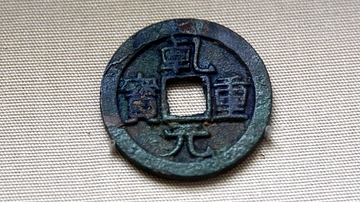
Image
Bronze Qianyuan Heavy Coin
This is a copper alloy coin with a double rim, worth 50 standard coins. Obverse, Chinese inscription. Minted in China. Tang Dynasty, 759 CE. (The British Museum, London).
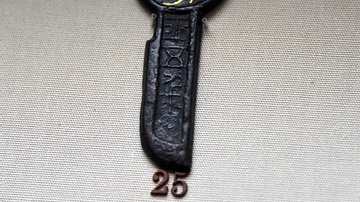
Image
Bronze Knife Coin
So-called knife money, worth 5000 standard coins. Obverse, Chinese inscription. Minted in China; ruler Wang Mang. Wang Mang's four coinage reforms were not successful and the widely accepted wuzhu were soon re-issued. Xin Dynasty, 9-23 CE...
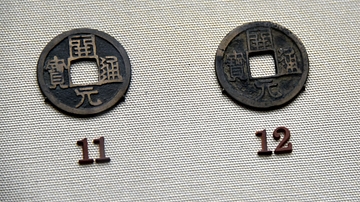
Image
Bronze Haiyuan Tongbao Coin
Also called Kaiyuan tongbao. This was the first imperial coin to use a four-character inscription with the term tongbao , meaning "coin", (circulating money), which then became customary on Chinese coins up to the 20th century. Copper alloy...

Image
Silver Bowl Decorated with Figure Scenes from Pakistan
The external surface of this thick-walled silver bowl was inscribed and decorated with a central male figure surrounded by four hunters; two hunters wear crowns similar to last Kidarite coins. It was originally gilded. Hephthalite period...
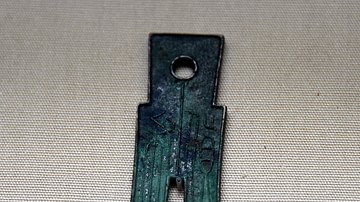
Image
Chinese Bronze Hoe Coin
Bronze spade money (worth 25 standard coins) with Chinese inscription, minted in China under the rule of Wang Mang, Xin Dynasty, 9-23 CE. Wang Mang's four coinage reforms were not successful and the widely accepted wuzhu were soon reissued...

Image
Medieval Butcher
A 14th century CE illustration of a medieval butcher.

Image
Medieval Baker & Apprentice
An illustration of a medieval baker and his apprentice. (From 'The Medieval Cookbook' by M.Black)
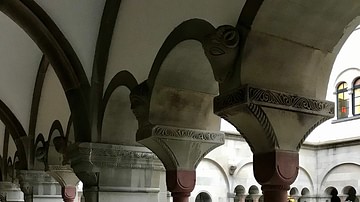
Image
Grossmunster's Cloister
Grossmünster Cathedral in Zürich, Switzerland contains a nearby cloister that was refurbished and renovated in the 1960s. The original cloister dates from c. 1170 CE.
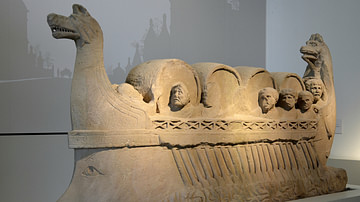
Image
Neumagen Wine Ship
Funerary stone monument in the shape of a rowing ship for transport of wine barrels on the Moselle river. The barge is loaded with four large wine-barrels, and manned by six oarsmen and two steersmen, one of whom is marking the time by clapping...
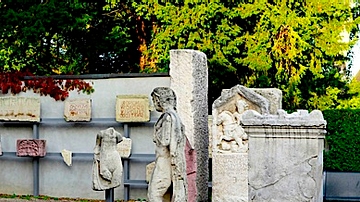
Image
Lapidarium at Augusta Raurica
The lapidarium is a collection of stone monuments at Augusta Raurica in what is present-day Switzerland. The statues and sculptures show the type of clothing worn by people in the Roman period, their names, what they worked at and how long...